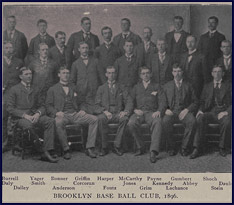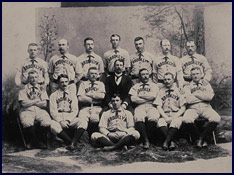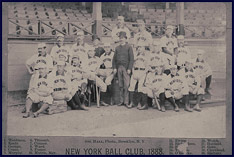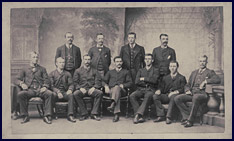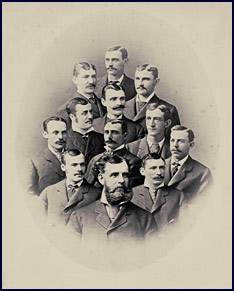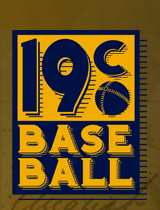History of the Strike (Continued)
1889 (NL + AA)
- A ball struck at and missed by the Batsman without its touching his bat.
- A ball legally delivered by the Pitcher that does not pass below the knee and above the shoulder and over Home Base, but not struck at by the batsman.
- An obvious attempt to make a foul hit.
In 1889, for the first time, the term "Foul Tip" is used and it is distinguished from, although in the same paragraph as, a "Foul Hit."
Rule 38. A Foul Hit is a ball batted by the Batsman, standing in his position, that first touches the ground, any part of the person of a player, or any other object that is behind either of the Foul Lines, or that strikes the person of such Batsman, while standing in his position, or batted directly to the ground by the Batsman, standing in his position, or batted directly to the ground by the Batsman, standing in his position, that (whether it first touches Foul or Fair Ground) bounds or rolls outside the Foul Lines, between Home and First or Home and Third Bases, without interference by a Player. Provided, that a Foul Hit not rising above the Batsman's head and caught by the Catcher playing within ten feet of the Home Base, shall be termed a Foul Tip.
The batter was out if a Foul Hit was caught before touching the ground. (Today we call this a foul ball and if the ball rises above the batters shoulders and caught by the catcher the batter is out.)
1890 (NL + AA) - 1893 (NL + AA)
- A ball struck at and missed by the Batsman without its touching his bat.
- A ball legally delivered by the Pitcher that does not pass below the knee and above the shoulder and over Home Base, but not struck at by the batsman.
- An obvious attempt to make a foul hit.
Rule 38. A Foul Hit is a ball batted by the Batsman, standing in his position, that first touches the ground, any part of the person of a player, or any other object that is behind either of the Foul Lines, or that strikes the person of such Batsman, while standing in his position, or batted directly to the ground by the Batsman, standing in his position, that (whether it first touches Foul or Fair Ground) bounds or rolls outside the Foul Lines, between Home and First or Home and Third Bases, without interference by a Player. Provided, that a Foul Hit not rising above the Batsman's head and caught by the Catcher playing within ten feet of the Home Base, shall be termed a Foul Tip.
The Players' National League of Base Ball Clubs, during their only season in 1890, did not mention the foul tip and used the same rules as the NL and AA during the 1888 season.
The NL and AA rules for 1890 did not make any changes to the "strike" rule, but verbiage was added regarding an "obvious attempt" and the bunt is mentioned.
From the NL and AA rule book - 'An "obvious attempt" to hit the ball Foul would occur if the Batsman turned round and attempted to hit the ball just as it had passed him to the left of his position. It should be understood that no attempt to bunt a ball can be justly construed as an effort to hit a Foul ball intentionally.'
1894 (NL + AA)
- A ball struck at and missed by the Batsman without its touching his bat.
- A ball legally delivered by the Pitcher that does not pass below the knee and above the shoulder and over Home Base, but not struck at by the batsman.
- An obvious attempt to make a foul hit.
- A ball struck at, if the ball touches any part of the batsman's person.
Rule 40. A bunt hit is a fair hit to the ground within the infield.
The definition of the foul hit was unchanged, now Rule 39.
The Rules: History of the Strike Continued ![]()
The Rules of the Game: A Compilation of the Rules of Baseball 1845–1900 ![]()
